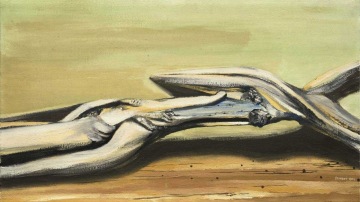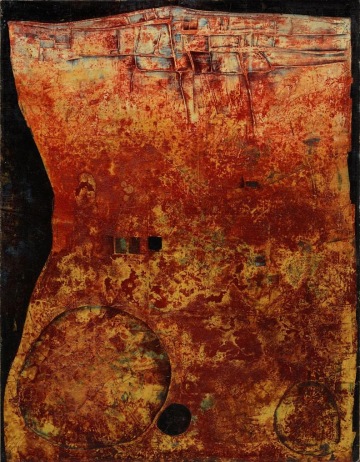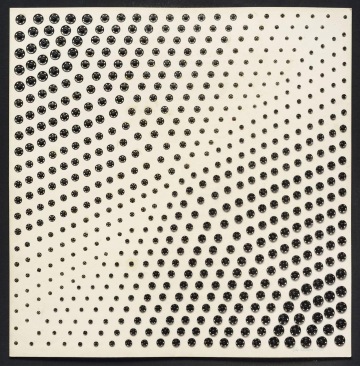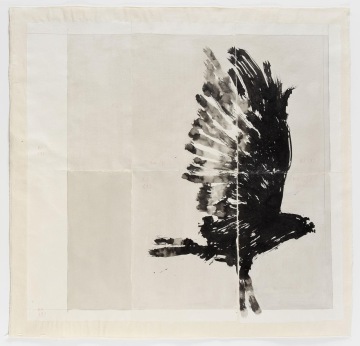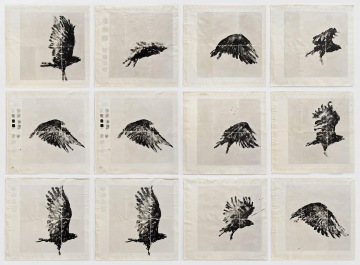The story of the Kunsthalle Praha art collection
„Historically, collections came first, while large museums and galleries only began to emerge later. Collections are important not only for their frames of reference, but mainly for their ability to represent history and past events.”
Štefan Tóth, collection manager at Kunsthalle Praha
History written with(out) a collection
While art museums were traditionally understood as spaces for presenting and storing collections, the idea behind kunsthalles was, from their conception in the mid-19th century, to present short-term exhibitions of contemporary artists.
However, this was not always the case; the history of these spaces is more complicated. For instance, probably the oldest kunsthalle in Europe – Staatliche Kunsthalle Karlsruhe, built in 1846 – has always collected and exhibited art ranging from the middle ages to contemporary works; its permanent exhibition contains over 800 paintings.
Throughout more than a century of their coexistence, the models and characteristics of both institutions – kunsthalles and traditional museums – have changed greatly and often significantly converged.
As a result, we can today witness instances where a museum launches a short-term exhibition which is not based on works from its own collection, while kunsthalles may manage a permanent collection and present it to their visitors through both long-term exhibitions (Kunsthalle Mannheim) and short-term exhibitions (Kunsthalle Würth).
The simplified statement that a kunsthalle equals an art space without its own collection is not necessarily true. In reality, there are as many forms of kunsthalles as there are kunsthalles.
You can read more about the history and meaning of this term in our recent interview with Anna Kodl, whose dissertation focuses on the evolution and current operational challenges of kunsthalles and similar institutions.
Why does Kunsthalle Praha have its own collection?
Along with exhibitions, educational programs, and cultural programs, the collection itself represents a crucial means of fully achieving Kunsthalle Praha’s mission—that is, documenting and presenting the development of the art scene of the 20th and 21st centuries in the Czech Republic, as well as in the broader scope of Central Europe other European countries.
While compiling the collection, we draw both on our own research and on current methodologies of art history and theory. We therefore want to present our artworks not only through traditional art historical canons, but also in entirely new perspectives.
The Kunsthalle Praha collection will not be exhibited permanently—we are preparing our exhibition program independently of it. However, certain works from the collection can either be included in some of the temporary thematic exhibitions or in occasional exhibitions based directly on our collection. The entirety of the collection will be available through an online database.
We want to offer you, our future visitors, another possible path toward a deeper understanding of artistic expression, one that is not exclusively based on historical interpretation. We believe that anyone can find something to relate to in the collection, be it on an aesthetic, intellectual, or emotional level.
-
Mikuláš Medek, Red Venus, 1959
-
Běla Kolářová, Variations to Two Triangles I, 1968
Collection | Platform
We often get asked what it means to present a collection as a platform.
It is important to us that we gradually compile a strong collection which will represent the significant dimensions of modern and contemporary Czech art, further enriched by related works of international artists. Our aim is to make the collection available both to researchers and to various types of projects, the outcomes of which we will share with you.
That is why we are constantly searching for new acquisitions of larger anthologies and collections focusing on specific art historical topics or periods. Furthermore, artworks which were created as part of our exhibition program can also sometimes become part of the collection. One such example is the kinetic light installation TransFormation – Pěšánek/Díaz, created by the contemporary Czech-Argentine artist Federico Díaz as an homage to the lost kinetic sculptures of visionary artist Zdeněk Pěšánek, which were originally meant to adorn the facade of the former Zenger Electrical Substation. By the way, we also regularly loan out works from our collection to institutions in the Czech Republic and abroad.
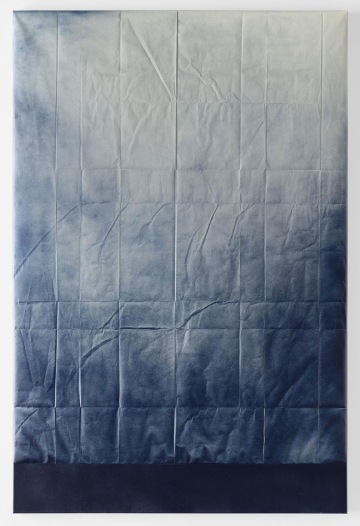
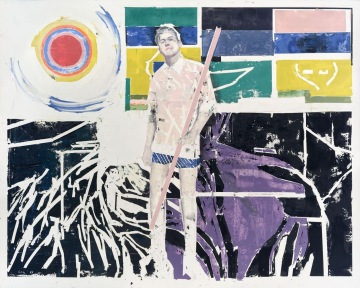
-
Monika Žáková, Untitled, 2018
-
Alexander Tinei, Measuring the Roots, 2019
The structure of the collection
We focus on the following three areas:
-
Modern art
-
Post-war art
-
Contemporary art
The entire collection is made up of artworks dating from between the year 1900 and the present day. Once you delve into it, you will discover two-dimensional pieces (paintings, works on paper), three-dimensional pieces (objects, sculptures, installations), and also new media art.
For instance, you will have the opportunity to explore works by surrealist artists Jindřich Štýrský, Toyen, and Max Ernst. Other international artists represented in our collection include Alicja Kwade, Katharina Grosse, Tatiana Trouvé, Hans Hartung, Damien Hirst, William Kentridge, Anselm Kiefer, Georges Mathieu, and Haroon Mirza. As for Czech artists, we might mention Běla Kolářová, Ladislav Sutnar, Anna Hulačová, Eva Koťátková, Josef Bolf, Jiří David, Stanislav Kolíbal, and František Skála, among many others.
William Kentridge, Birds in Flight, 2016–17
A door to the future
We want to experience art together with you! We would like to open the Kunsthalle Praha collection to both the general public and external curators and art historians from around the world.
We are delighted when art gets a chance to leave the depository and enter our lives through short-term thematic exhibitions, artistic publications or online presentations.
We are doing everything we can to make Kunsthalle Praha an open space which will welcome visitors of all ages, offering the opportunity to explore and share new perspectives on art and on the world we live in.
I.
The art collection of Kunsthalle Praha is an important means of accomplishing the newborn institution’s mission of documenting and presenting the evolution of the Czech Republic’s art scene throughout the 20th and 21st centuries, including its links to the international scene.
II.
The collection is assembled as a comprehensive array of artworks, including gifts and long-term loans. The core of the collection is a set of several hundred works belonging to the founders of Kunsthalle Praha – Pavlína and Petr Pudil, operating as The Pudil Family Foundation.
III.
The collection will not be permanently displayed at Kunsthalle Praha, but you will be able to familiarize yourself with it through temporary thematic exhibitions and through the upcoming online database.
